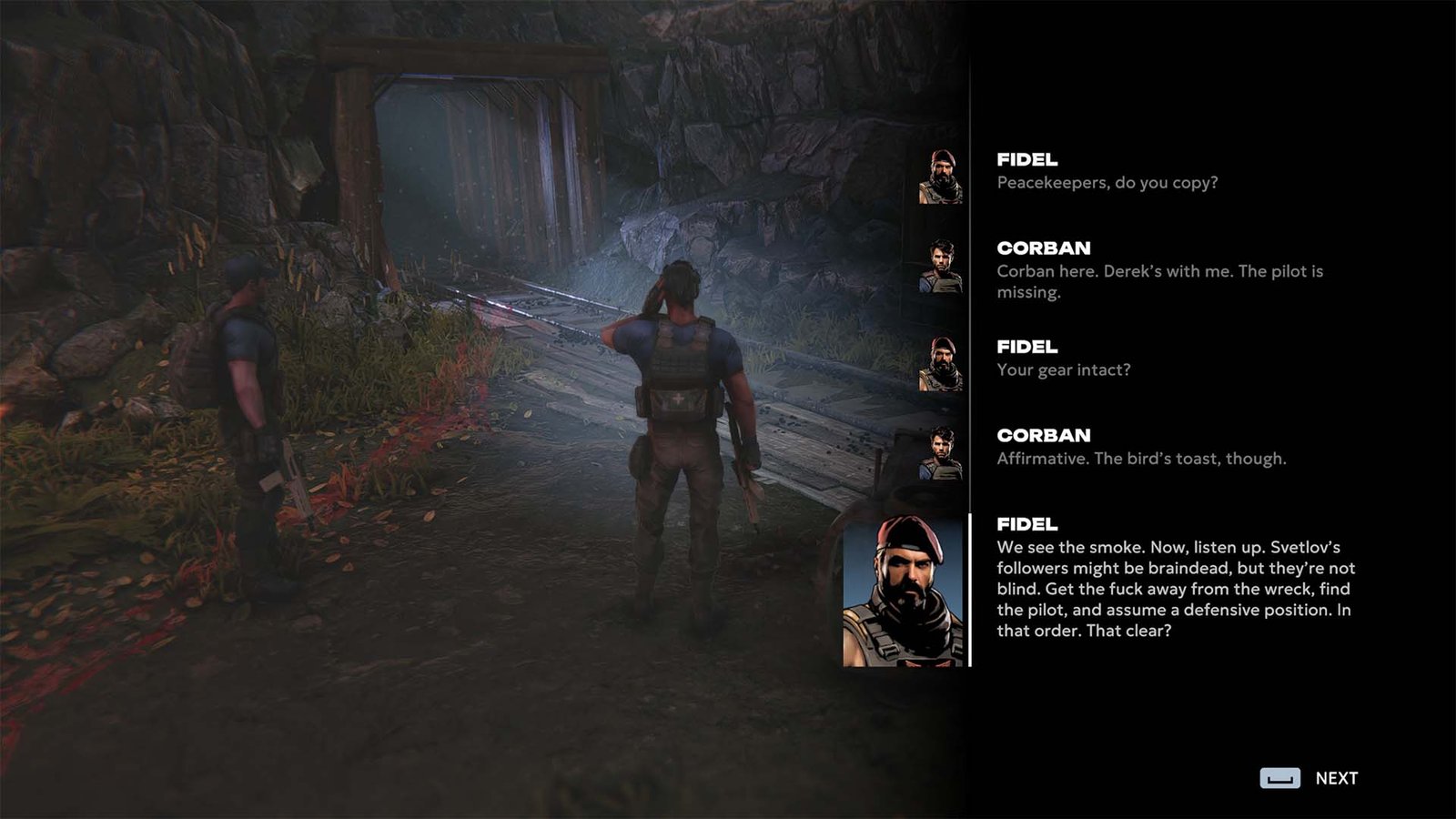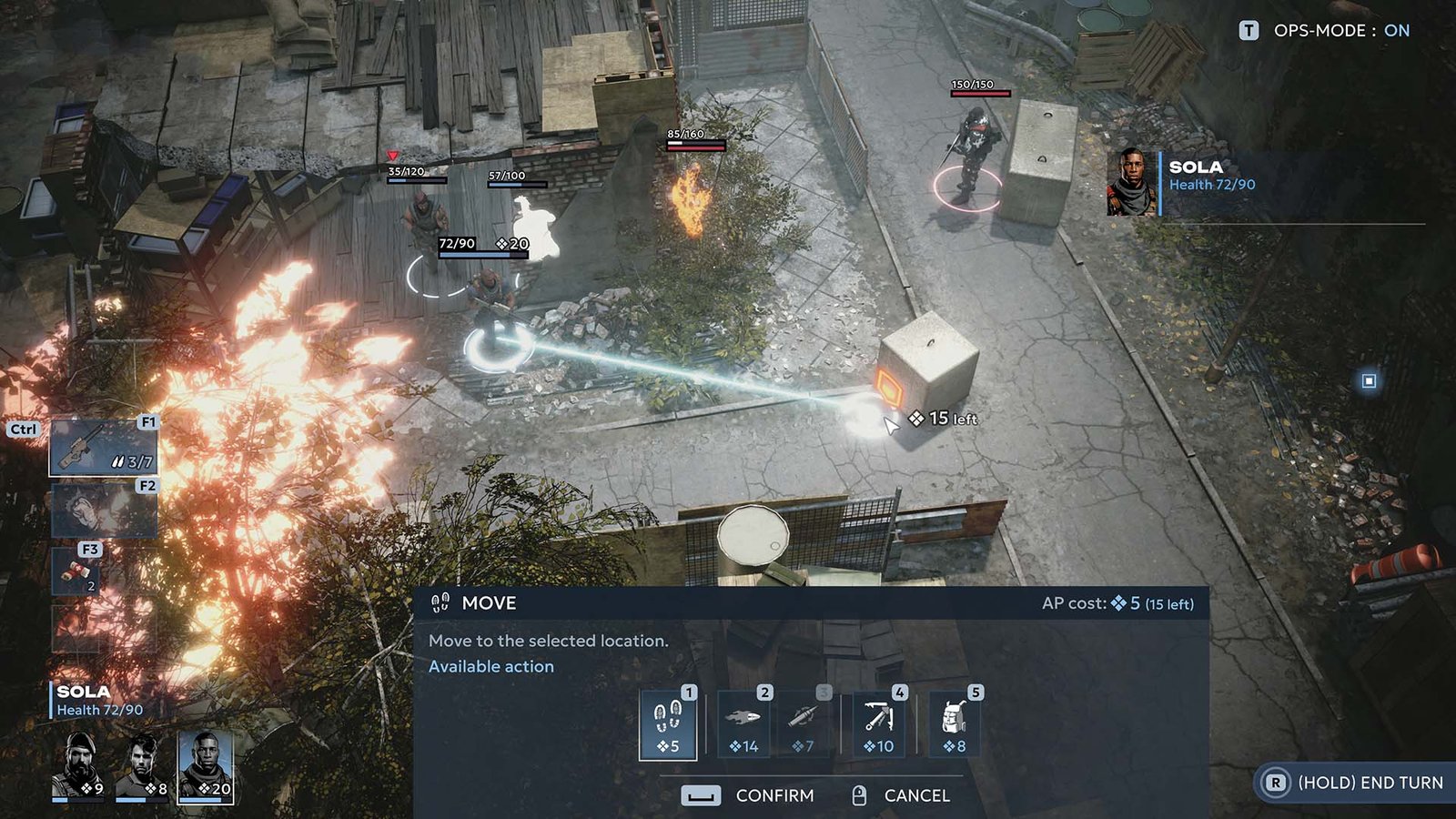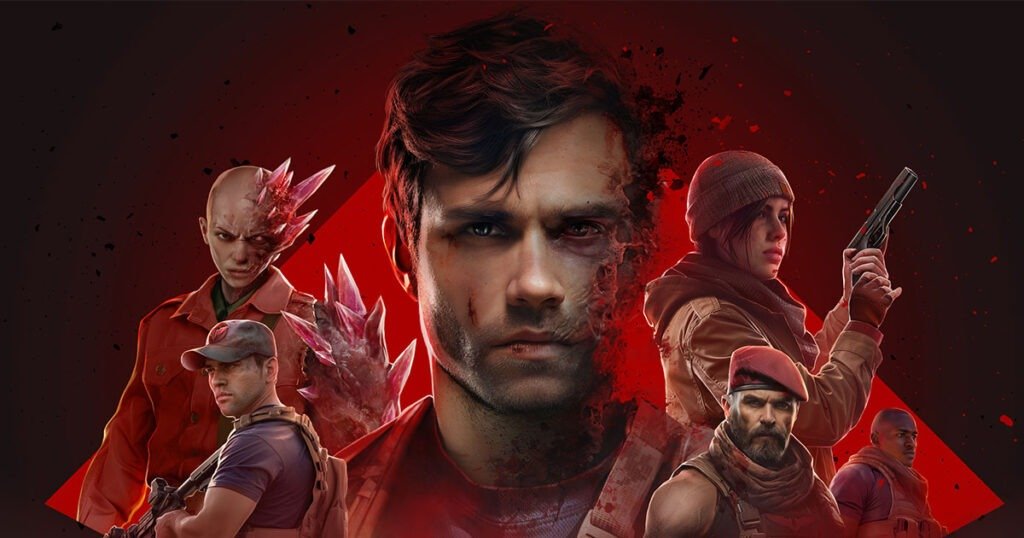Chains of Freedom on PC
Dystopia can be fertile ground for exciting adventures. For the most part, the fictional Eastern European state presented by Nordcurrent in Chains of Freedom seems brimming with potential. Add in turn-based tactics and government conspiracies, and it could have been one hell of a ride. Unfortunately, the game never progresses far enough in terms of gameplay mechanics or storytelling, despite the worldbuilding being something that can be appreciated.
As part of the Peacekeepers, players are tasked to do their part in maintaining order for the Sovereignty regime. With a rogue scientist running about and threatening the peace, along with the ever-present danger of mutants due to alien organisms, making it out alive is already going to prove difficult.
There is a clear emphasis on narrative in Chains of Freedom, but despite the various twists and turns throughout the plot, nothing is actually surprising. The way characters are depicted makes them one-dimensional, and in turn transforms any potential shock into predictable outcomes. The use of voice acting could have had a bigger impact, but unfortunately, it follows the same vein of being too run-of-the-mill.
Leaping into the gameplay front, the complaints remain essentially the same. It’s not bad, but it’s not spectacular either. Once you gain control of your squad, you are free to explore the world. Each area is home to sights to see, conversations to be had, items to discover, and resistance to be overcome. There are clear linear paths, accompanied by an occasional diversionary path that can lead to useful resources.
However, life is never that easy, and it won’t be long before you have to enter turn-based combat and test your mettle against what Chains of Freedom has to offer. If you have played similar games like XCOM, then you already know what you are signing up for.
Characters move in turns, across grid-based terrains, taking into account movement and action limits, and using cover to protect themselves. A number of factors determine hit chance, and putting some thought into planning is usually a good way to go about things.

I appreciate how the game allows players more freedom with its action points system, which enables you to mix and match movement, attacks, skills, and item use as you see fit. From a set pool of AP, you can pull off as many actions as the pool allows, going beyond the standard move and attack cycle that most games adhere to. There is nothing more satisfying than eliminating several enemies with a smart turn, and then preparing yourself for the next round in an advantageous position.
The fun is accentuated by new tools that expand your options for new encounters. Having a grappling hook that can get you up high grants a clear advantage, for example, so does finding a powerful new shotgun. There are also Biocrystals to be found and equipped, granting passive and active enhancements that can help tailor your playstyle for each squad member, such as healing from damage dealt or even restoring action points for each kill.
Yet, the deeper you progress in Chains of Freedom, the enjoyment from combat lessens. This is mainly due to the enemy and encounter setups, which make battles feel almost the same every single time. Dealing with tanks, snipers, and assault enemies will become second nature, with only the mutants’ large health pools and powerful attacks requiring a little more caution.

It is also disappointing to see that stealth is not fully utilised in the game, with its scant use diluting what could have been possible. Good use of stealth can negate entire encounters completely, or give you the opportunity to position yourself for an ambush. Still, the problem is that this is only possible for certain encounters, which prevents different players from implementing creative strategies.
Also, even with the options to turn characters into specialists, that freedom also means that you could theoretically make everyone the same killing machine. This lack of progression does little for both gameplay and characterisation, which contributes to that feeling of sameness once again.
It is a shame, considering that Chains of Freedom does really well in terms of visual worldbuilding. Stylised cutscenes work a treat at heightening the stakes, the environments are eye-catching and intriguing, and the lighting elevates the experience in a way that brings you even closer to the events on the ground. Audio, on the other hand, lacks the same oomph, which falls in line with everything else.

For what it’s worth, Chains of Freedom is not a bad game at all. As a turn-based tactical adventure, it fulfils the brief sufficiently, with the sort of conflict and narrative that is simply par for the course. Being unable to offer anything genuinely new means that you really have to love the premise to see everything through, and at the end of the day, that’s not for everyone.
Chains of Freedom is now available on PC.
SavePoint Score
Summary
Turn-based tactics at its most straightforward, it’s a pity that Chains of Freedom didn’t go further to make itself stand out more.

